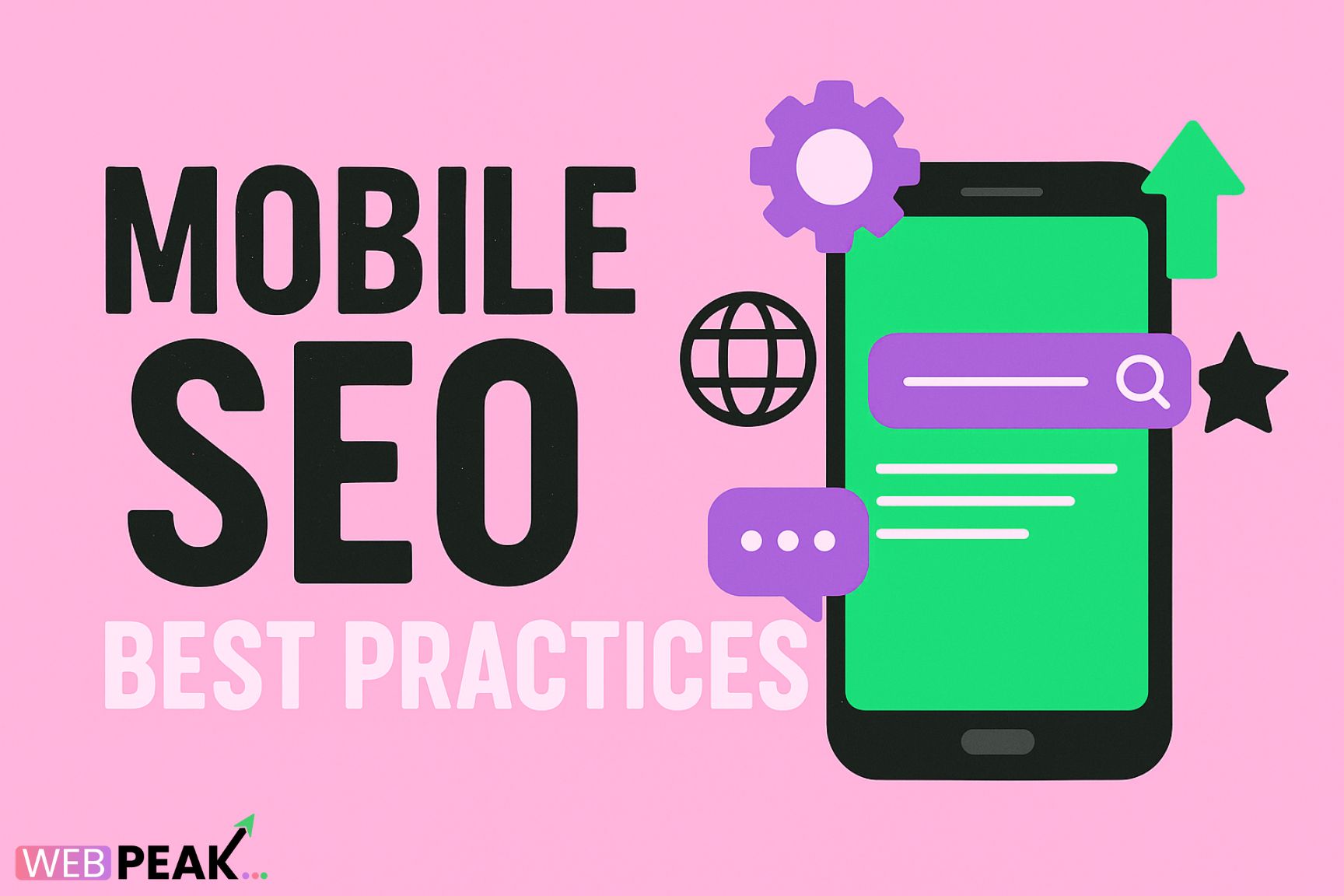In today’s digital landscape, mobile devices dominate the way people browse, shop, and consume information online. With more than half of all web traffic now coming from smartphones and tablets, businesses that fail to optimize for mobile search risk losing valuable visibility and conversions. Mobile SEO is not just a trend; it’s a necessity for sustainable online growth. This article explores the best practices for mobile SEO and how you can ensure your website is mobile-friendly, user-focused, and optimized for search engine success.
Why Mobile SEO Matters
Search engines like Google prioritize mobile-first indexing, meaning they use the mobile version of a site’s content for ranking and indexing. If your website isn’t optimized for mobile users, you’re at risk of lower rankings, poor user experiences, and reduced engagement. By implementing mobile SEO strategies, you ensure that your content is accessible, fast-loading, and user-friendly on all devices.
Responsive Web Design
The foundation of mobile SEO lies in responsive web design. A responsive website automatically adjusts to different screen sizes and orientations, providing a seamless experience across devices. Rather than maintaining separate mobile and desktop sites, a single responsive design ensures consistency and reduces duplicate content issues.
- Use fluid grids and flexible images that adapt to any device.
- Ensure clickable elements like buttons and links are easy to tap.
- Test your design on various screen sizes to verify usability.
Improve Page Speed
Mobile users expect fast-loading websites. Slow sites increase bounce rates and negatively impact rankings. Google’s Core Web Vitals now emphasize loading performance, interactivity, and visual stability—key metrics for mobile SEO.
- Compress and optimize images without sacrificing quality.
- Minimize JavaScript and CSS files for faster rendering.
- Leverage browser caching and Content Delivery Networks (CDNs).
- Use tools like Google PageSpeed Insights to diagnose performance issues.
Optimize Mobile User Experience
Mobile SEO goes beyond technical optimization; it also focuses on user experience (UX). A mobile-friendly site should be intuitive, easy to navigate, and visually appealing.
- Keep menus short and simple with clear categories.
- Ensure fonts are legible without zooming.
- Prioritize content hierarchy for quick scanning.
- Use clear calls-to-action that guide users effectively.
Mobile-Friendly Content
Content remains king, but how it’s presented on mobile devices makes a big difference. Long walls of text can overwhelm users on smaller screens, so it’s vital to optimize readability.
- Break text into smaller paragraphs with subheadings.
- Use bullet points and numbered lists for clarity.
- Incorporate visuals like images, infographics, and videos.
- Ensure videos are responsive and load smoothly on mobile devices.
Optimize for Voice Search
With the rise of digital assistants like Siri, Google Assistant, and Alexa, voice search is becoming increasingly popular. Mobile users often rely on voice queries, which are typically conversational and longer than typed searches.
- Focus on natural language and long-tail keywords.
- Answer commonly asked questions with concise, clear responses.
- Use structured data to help search engines understand your content.
Local SEO for Mobile Users
Many mobile searches are location-specific, such as “near me” queries. Optimizing for local SEO ensures your business shows up when users search for services or products in their area.
- Claim and optimize your Google Business Profile.
- Include your business’s name, address, and phone number (NAP) consistently across all platforms.
- Encourage satisfied customers to leave reviews.
- Use local keywords in your content and metadata.
Technical Mobile SEO Factors
Technical SEO is just as important for mobile sites as it is for desktop. Ensuring your site architecture, crawlability, and indexing are properly configured can help search engines rank your content effectively.
- Avoid intrusive interstitials (pop-ups) that block content.
- Implement mobile-friendly structured data markup.
- Use HTTPS for secure browsing experiences.
- Check for mobile usability errors in Google Search Console.
Track and Measure Mobile SEO Performance
Ongoing optimization is critical to long-term success. Use analytics tools to measure how mobile users interact with your site and identify areas for improvement.
- Monitor bounce rates and session durations for mobile visitors.
- Track rankings for mobile-specific keywords.
- Analyze Core Web Vitals reports regularly.
- Run A/B tests to experiment with design and UX enhancements.
Conclusion
Mobile SEO is no longer optional; it’s essential for businesses that want to remain competitive in search rankings and deliver seamless experiences to their users. From responsive design and page speed optimization to local SEO and voice search readiness, the best practices outlined here will help you create a mobile-friendly website that attracts, engages, and converts visitors.
To ensure your business is fully optimized for mobile success, consider working with experts who understand the intricacies of SEO, web development, and digital marketing. You can WEBPEAK, a full-service digital marketing company offering Web Development, Digital Marketing, and SEO Services, to help you stay ahead in the competitive online landscape.





